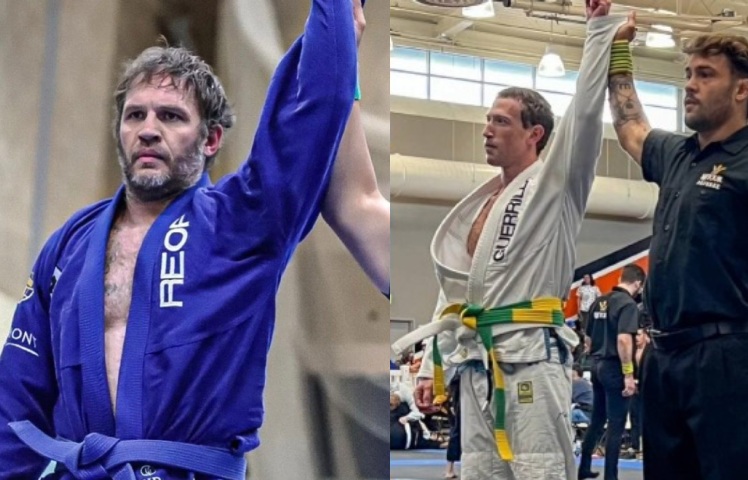Brazilian Jiu-Jitsu is a relatively young and ever-expanding. The growth of MMA has shined a light on bjj for the average American male who can’t wait to learn and then tell all his friends about it. And of course with the 18-45 demographic you typically have a crowd whose habits are just forming and who aren’t afraid to invest their own money into it.
Dropping the Brazilian from bjj probably seems like the best next move, especially considering the importance of the American market.
You can also read here on how the growth of MMA and BJJ caused the downturn in popularity of Aikido.
So what’s behind this newfound popularity? For starters, Brazilian Jiu-Jitsu has a long and rich history that many are attracted to. It also offers multiple benefits, from increased physical fitness to self-defense training. Brazilian Jiu-Jitsu is an effective form of martial arts for all levels of experience and can be tailored to both competitive settings and recreational activities.
The UFC & Joe Rogan Helped Bring BJJ to the Mainstream
2 of the biggest ambassadors are the UFC, which is a walking infomercial for the effectiveness of Jiu-Jitsu and of course the podcast of the UFC’s commentator Joe Rogan.
The Joe Rogan experience podcast is now the most popular podcast in the world, having just signed a record breaking 100 million dollar contract with Spotify. Rogan virtually talks about Jiu-Jitsu in almost every podcast, and has hosted many celebrity BJJ practitioners.
Immense Cultural Effect Of the Joe Rogan Experience Podcast on the Rise Of BJJ
The commentating legend helped popularize BJJ when he became the voice of the UFC back in 1997. He’s credited with giving fighters their due by introducing fans to the details and nuances of each martial art style and making sure everyone knew there was more than just punching and kicking going on inside the cage. As a result, BJJ rose to prominence alongside MMA.
And then there’s Hollywood. Thanks to some well-known action stars like Tom Hardy, we now have mainstream names associated with BJJ—and with it, an influx of moviegoers heading to the gym for their first rolling classes. Likewise, tech Titans like Bill Gates and Mark Zuckerberg have openly praised BJJ for its physical and mental advantages—all further evidence that Brazilian jiu-jitsu is here to stay.
Celebrities Who Train BJJ: From Tom Hardy to Mark Zuckerberg
Speaking of celebrities, they also play a huge role in popularizing Jiu-Jitsu to the mainstream public. The names of Ashton Kutcher, Demi Lovato, Russell Peters, Keanu Reeves, etc… come to mind when we think of celebrities that have been bitten by the Jiu-Jitsu bug.
In recent years, Brazilian Jiu-Jitsu has exploded in popularity. It’s been adopted by celebrities, athletes, and average people alike as a way to stay fit and learn self-defense. Here’s a look at some of the celebrities who have embraced the martial art:
Tom Hardy: Tom Hardy is perhaps one of the most well-known actors who practice BJJ. He began training in 2014 and has since participated in numerous BJJ competitions around the globe. In addition to his passion for BJJ, he also studies Muay Thai and Judo.
Mark Zuckerberg: Facebook’s CEO may not be a fighter by trade, but that doesn’t mean he doesn’t enjoy testing himself with BJJ. In 2015, he even shared a photo of himself in a Gi on his Instagram account and he recently competed and won gold and then got promoted to blue belt in BJJ.
Can BJJ Become an Olympic Sport? The Challenges Ahead
A potential problem is how to make BJJ exciting enough for a general audience. At the moment, it is often seen as a slow and unexciting martial art by outsiders due to its focus on grappling rather than striking, which makes it difficult for viewers to connect emotionally with what’s taking place in front of them.
Finally, there is also the question of classification; there are various divisions in BJJ from Brazilian jiu-jitsu gi (for traditional clothing) to submission grappling (where gis are not used). It could be difficult for both players and judges alike to agree on which division should be officially adopted as an Olympic sport if one were chosen over another.
Whether Brazilian Jiu-Jitsu will ever become an official Olympic sport remains to be seen, but these challenges make such an outcome seem unlikely at this stage.
With more than 4 million practitioners around the world, it’s safe to say that Brazilian Jiu-Jitsu’s popularity continues to grow. It has become a much-loved martial art, and its focus on physical, mental and spiritual growth is highly beneficial for practitioners. Whether you’re looking for a physical challenge, a way to relieve stress, or just a fun way to pass the time, Brazilian Jiu-Jitsu is the martial art for you.

















